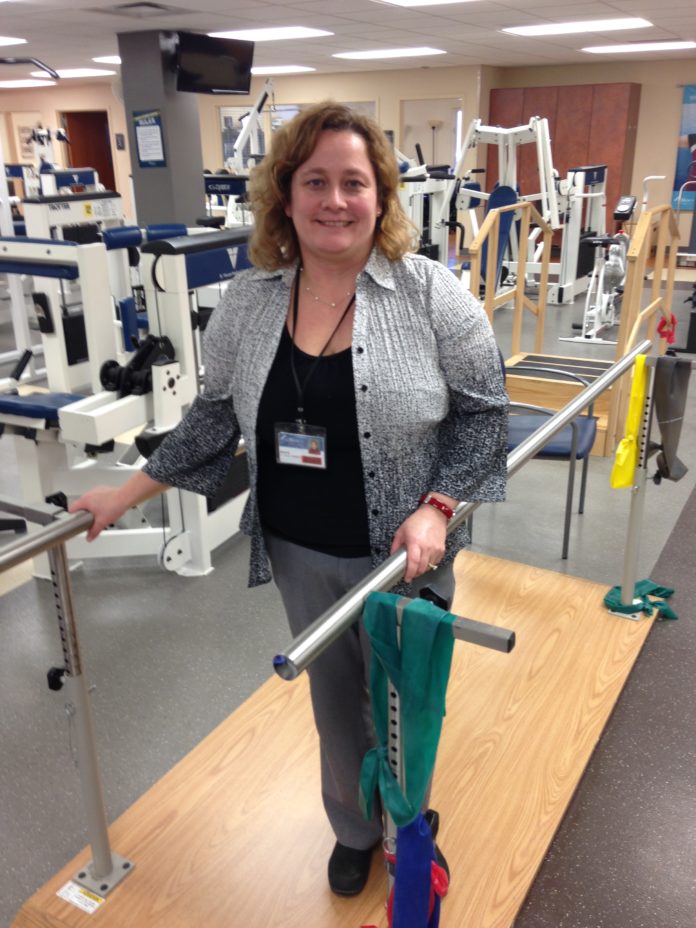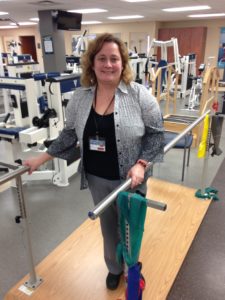
Cancer is a painful experience in a multitude of ways, but a Mercy Cancer Center program attempts to lessen the pain associated with treatment of the disease.
The STAR (Survivorship Training and Rehabilitation) Program is a nationally recognized cancer effort that focuses on improving the lives of survivors who suffer from the side effects of treatments.

“Fatigue is probably the primary complaint all of our cancer patients have,” said Anne Schroeder, a physical therapist and one of the 25 Mercy employees certified in the STAR Program. “It doesn’t matter where the diagnosis came from. A lot of it is the effect of the chemotherapy and radiation, and the medications they take are pretty toxic to their system. … A lot of patients experience muscle weakness and a lot of balance issues.”
Since 2013, a team of multidisciplinary specialists at Mercy — occupational and physical therapists, as well as nurses — have helped cancer patients overcome treatment-related conditions such as pain, weakness, fatigue, shoulder problems, balance issues, memory and concentration difficulties, swallowing and speech problems and lymphedema. About 10 patients go through the program each month.
“Regardless of their prognosis, the benefit that they’ll come back and tell you about is that they have more energy or ability to do what they need to do,” Schroeder said. “For some of them, that’s getting back to work. For others, it’s just being able to sit up at the kitchen table to eat with their family for a half-hour.
“There’s all levels of function there, but really we’re trying to get their pain down, increase their quality of life,” Schroeder said. “We set those goals with the patient in the first meeting or two.”
Catherine Hughes is an example of what the program can accomplish.
The 46-year-old Sylvania woman was diagnosed with breast cancer, resulting in two surgeries and chemotherapy every three weeks for one year, during which she also had 35 radiation treatments. To complicate matters, she was diagnosed with lymphedema — fluid retention and tissue swelling — in her left arm and left breast due to the removal of her lymph nodes.
“After all the treatment I had been through I felt like my body never got back to normal. I was fatigued and had a hard time exercising,” Hughes said in an email interview with Toledo Free Press. “When the opportunity was given to me to do the STAR Program I was excited to participate in it. The program made a world of difference in my life. After completing the STAR Program, I truly feel like my body is back to normal. I am able to exercise and I’m not tired anymore. Also, I have seen a difference in my lymphedema; my arm does not swell up anymore and I feel it is under control.
“This program has been a blessing to me and they have an amazing staff,” Hughes said. “From the time I was diagnosed with cancer I had all my doctor appointments, lab tests, surgeries and any other test I needed through the Mercy system. I always felt I was given the best treatment in every department I had contact with. The people who work for the Mercy system are wonderful and helpful. I thank God every day for the medical staff that gave me great care.”
Patients’ stays in the STAR Program tend to be one to two times per week for two to three months, Schroeder said. Inclusion into the program requires a physician referral.
So far, Schroeder has seen breast and brain cancer victims the most frequently.
While brain cancer is not a common cancer, Schroeder said these patients are more likely to experience problems with balance.
“Our goal is to see them the minute they start to experience a deficit, if not before,” she said. “We try to get people in quicker so they don’t have to live with those deficits. I think they just accept it sometimes as ‘Well, I’m happy to be alive and I’m stuck with this.’ But they can improve.”
A common problem faced by breast cancer patients treated by Schroeder is tightness in the shoulders, due to scarring, radiation and surgical issues.
“A lot of them can’t lift their arm up to get their shirt on,” she said. “Any task reaching overhead they can’t do. And they have weakness with that too, so they might not be able to lift their coffee cup.”
The STAR Program can help them regain that range of motion and muscle strength.
Regardless of the type of cancer, many cancer patients experience similar symptoms due to chemotherapy and radiation, Schroeder said.
“As a physical therapist, I don’t treat a kidney or a liver, but the chemotherapy effects [they experience] are almost the same,” she said.
The STAR Program was founded by Dr. Julie Silver an assistant professor in Harvard Medical School’s Department of Physical Medicine and Rehabilitation.
For more information or to refer a patient, call (888) 987-6372 or visit mercyweb.org






















